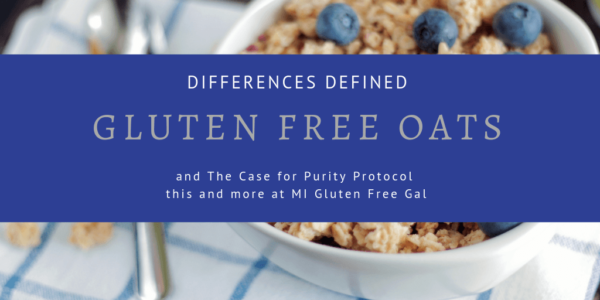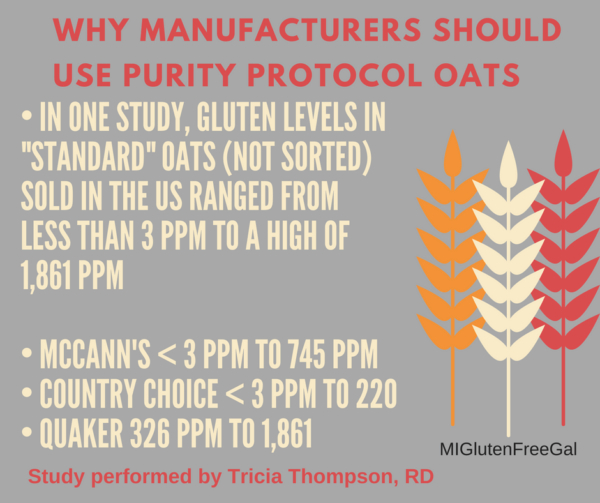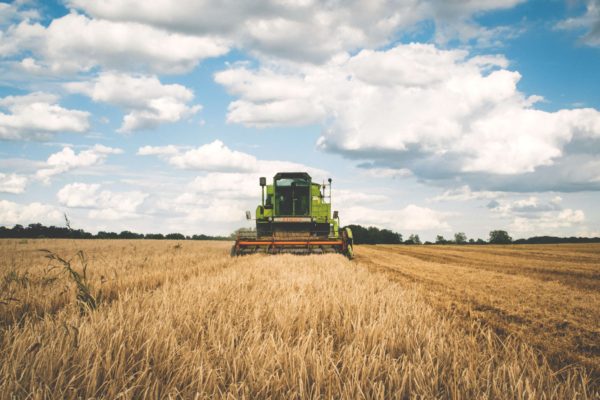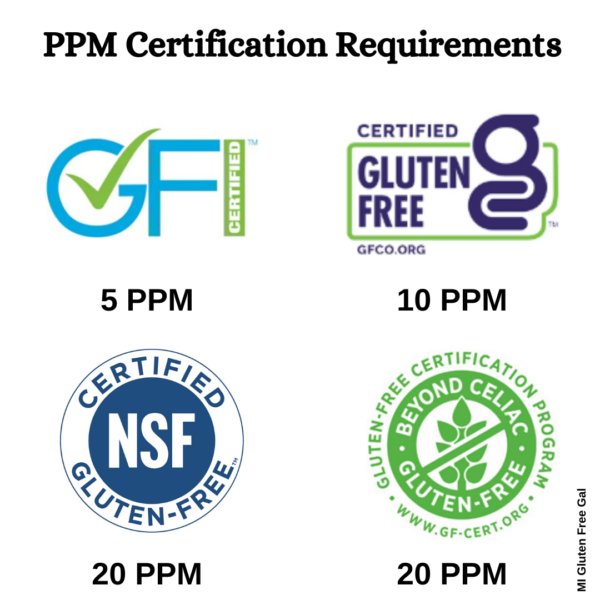Gluten Free Oats: Differences Defined
As an Amazon Associate and member of other affiliate programs, I earn from qualifying purchases.
Fact. In and of themselves, oats contain no gluten. Second fact. Adding them to a gluten free diet remains tricky due to their processing. If you have Celiac Disease, make sure you know exactly which type of “gluten free oats” you’re buying.

For the sake of this post about gluten free oats, I’m breaking down oats into four categories. These include standard oats, mechanically sorted oats, purity protocol gluten free oats, and certified gluten free oats.

Standard Oats
BUT I THOUGHT OATS WERE GLUTEN FREE?
How would you define standard oats? (Sometimes people also call standard oats “commodity oats.”) These oats undergo no special treatment. Farmers grow them in fields that may be in proximity to wheat, rye and barley. They likely use the same trucks and processing equipment for multiple grains. Because of this, I would never deem these to be “gluten free oats.”
Research supports my opinion. In her Special Report On The Use of Oats in Gluten Free Foods, Gluten Free Watchdog highlighted the ppm results of various standard oats. She reported that one batch of standard Quaker oats tested as high as 1,861 PPM. That’s 93 TIMES HIGHER than the gluten free definition of 20 ppm. Researchers published in the Canadian Journal of Gastroenterology and Hepatology similar results. Of 133 oat samples, only 9 samples were found to contain under 20 ppm. The other 124 samples had gluten ranges of 21 – 3,800 ppm.

Mechanically Processed Oats
Can you identify this grain? I used this (and other free) pictures from Pexels for this post. Pexels marked this as “Wheat Grains Closeup Photography.” How does this tie in with “Mechanically Sorted Oats?” Machines use optic abilities to sort oats from wheat, barley and rye. Some batches test under 20 ppm. Some do not. As Gluten Free Watchdog mentioned in her report on gluten contamination levels of oat products, 5 products using mechanically sorted oats tested at above 20 ppm. These definitely don’t qualify as gluten free oats.
Cheerios continues to be the biggest user of mechanically sorted oats. Did you know Cheerios does not test individual batches of cereal? Gluten Free Watchdog explains their process in her post “Gluten Free Cheerios Take Two.”
How General Mills Tests for Gluten in Cheerios
“General Mills pulls 12 to 18 boxes during a 24 hour production cycle, grinds the contents of each box, takes a sample from the contents of each box, mixes all the samples together and regrinds, tests 12 sub-samples, and averages the results to provide a lot mean.” (via Gluten Free Watchdog)
Therefore, they blend multiple lots together, and then take a sample. So in a sense, they are taking an average of multiple lots. In the same Gluten Free Watchdog post, Tricia stated one of the lots tested above 90 parts per million. But since the other lot tested so low, the mean test result was therefore under 20 ppm. And put on shelves.
Not a fan of Cheerios? Check out my list of similarly shaped, gluten free cereals.

Purity Protocol Gluten Free Oats
Unfamiliar with the term “purity protocol?” Gluten free oats grown under these standards abide by a general set of guidelines. Only recently did oat growers develop a Definition of the Purity Protocol for Producing Gluten-Free Oats. These farmers grow their oats in dedicated fields and use strict standards for processing. Celiac Disease advocates (such as myself) suggest using only purity protocol oats.
This method of farming is still gaining traction. More and more gluten free food producers understand the importance of starting with a pure oat product. Manufacturers using purity protocol oats include Enjoy Life Foods, The GFB, and many more. I suggest bookmarking Gluten Free Watchdog’s Listing of oats produced under a gluten free purity protocol as a handy reference. If you know a brand using purity protocol oats, please use that link to get them on it!

Certified Gluten Free Oats
“Therefore, certified gluten free oats are purity protocol oats, right?”
Not so fast, Jack. Some certifying organizations allow manufacturers to use mechanically sorted oats in their gluten free items. Certified gluten free oats MUST still test below 20 ppm, and meet other stipulations of the certifying organization’s guidelines. For example, some companies use a blend of purity protocol oats and mechanically sorted oats. The Gluten Free Certification Organization will still certify these products, requiring their oats and their finished products to test under 10 ppm.
An additional interesting fact. Technically, the FDA claims using the words “gluten free, certified, or purity protocol” before the word “oats” in the ingredient list is against the rules. The FDA encourages brands to use those words elsewhere on the package, but not in the ingredient panel. Therefore, just because you DON’T see “certified” or “purity protocol” before the word “oats” doesn’t mean they’re not. (Some brands still put it in the ingredient list. The FDA says they aren’t as strict on this rule.)
Gluten Free Oats – Where To Go From Here
We go back to asking every brand their oat sourcing. (Or use Tricia’s aforementioned list.) Just make sure you know what you’re eating. Maybe you’re fine with mechanically sorted, certified gluten free oats. That’s okay. In the end, I just want all of us to be educated about what we’re eating. Safety first.

I just called Bakery On Main and they said all of their oats are purity protocol.
Please have them contact Gluten Free Watchdog with their oat supplier, and GF Watchdog will update her list.
It’s so tricky to find what is actually safe for anyone with celiacs when it comes to oats. Thanks for all your research and info.
Glad I can be of help! Always appreciate the food allergy awareness you bring!